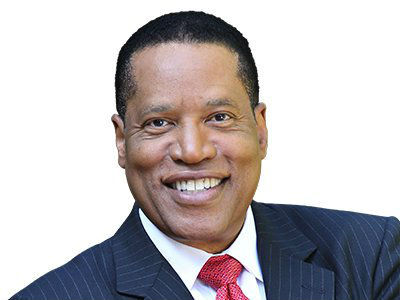Retailers under pressure amid tighter holiday shopping season
Lifestyle

Audio By Carbonatix
11:30 AM on Tuesday, October 21
By Alyssa Wolfe for Kase, Stacker
Retailers under pressure amid tighter holiday shopping season
The holiday season of 2025 is shaping up to be one of the most challenging shopping seasons in years. According to PwC’s Holiday Outlook 2025, consumers expect to trim holiday spending by 5% compared to last year, the first notable decline since 2020, with Gen Z slashing budgets by a steep 23%.
At the same time, consumer confidence has weakened: The University of Michigan’s Index of Consumer Sentiment fell to 55.1 in September, down 5.3% from August and more than 21% lower year-over-year. This makes the season feel less steady, requiring retailers to be more improvisational as they face an unpredictable peak season filled with challenges, including rising shipping surcharges, labor shortages, tight inventory deadlines, and new tariffs and trade policies.
Consumer sentiment and behavior shifts
In August 2025, Kase released its 2025 Peak Season Predictions eBook, warning that economic uncertainty and shifting consumer priorities would define this holiday season. Those early forecasts are now echoed by PwC’s 2025 Holiday Outlook and reinforced by the University of Michigan’s latest consumer sentiment data.
As mentioned, PwC reports that holiday spending is set to decline. And Gen Z, under mounting financial strain, plans to slash holiday budgets while boomers expect to increase their spending. Households with children are still projected to spend nearly twice as much as households without children. However, consumers also plan to trade down. This means turning to gift cards, consumables, and wellness-forward items that reflect value without excess.
Additionally, the University of Michigan’s September data paints a discouraging picture of confidence. Consumer expectations saw the sharpest decline, dropping 30% year-over-year, indicating skepticism about the economy’s future trajectory. Along with increasing mentions of “high prices” eroding household finances, the data highlights why value-driven shopping behaviors are intensifying.
All together, these findings suggest a peak holiday season where shoppers are deliberate, selective, and harder to forecast. With the other challenges retailers face this year, particularly around inventory and shipping, it will be about agility, which is where partnerships come in.
The challenges retail and ecommerce brands face this season
Each peak season brings its own set of challenges. However, 2025 is seeing more obstacles than normal between earlier inventory deadlines, high customer expectations, tighter consumer budgets, the end of de minimis, tariffs, and new trade policies.
Retailers must walk a fine line, balancing tight margins, unpredictable demand, and operational strain while meeting heightened customer expectations, including value, speed, and a rising demand for sustainability. This creates a set of challenges for brands to overcome to perform well during the holiday shopping season.
Packaging and packaging waste
Today’s consumers are more aware of the amount of fuel, packaging, and materials that go into holiday shopping and shipping. And while many shoppers’ primary concern is with the quality and price of a product, according to McKinsey & Company, in 2025, 44% of consumers said that environmental impact is “extremely important” or “very important” to them.
Packaging is also critical for brands. Retailers that don’t prioritize right-sized packaging and materials can end up paying more for shipping or alienating consumers who want to see more sustainable materials used in packaging or less packaging waste. Additionally, many customers are turning away from plastic, with 84% of Americans expressing concerns about the amount of plastic waste generated from packaging.
On top of packaging concerns, the surge in shipments raises sustainability pressures.
Surcharges, expectations, and worst days to ship
ShipMatrix estimates that 2.3 billion packages will be delivered in the United States during the peak season, 5% higher than the same period of 2024, mostly because of an extra shopping day this year
Carriers increased peak surcharges this year, adding to the pressure. The most impactful surcharges to watch are:
- Oversized and unauthorized package fees (FedEx/UPS/Amazon): exceeding $500 per package, these are the costliest penalties.
- Additional handling increases: rising above $10 per package, they hit mid-volume ecommerce shippers hardest.
- USPS long-zone rates: up to $7 higher for heavier parcels, shrinking USPS’s low-cost advantage for long-haul delivery.
- Residential surcharges: small on paper but massive at scale, with tens of thousands of shipments accumulating incremental per-package fees.
Retail brands will also have to manage customer expectations around shipping, especially throughout the busiest shopping days: the five-day post-Thanksgiving Black Friday, Cyber Monday frenzy, which PwC found accounts for 40% of holiday spend.
This year, consumers also want faster shipping, including same-day or buy online, pickup in-store (BOPIS) options (70% prefer home delivery, 39% BOPIS).
Returns surge
This season, brands will battle a surge of returns along with the potential of returns fraud, a growing issue within the retail industry. According to a recently released survey from ReturnsPro, 75% of retailers say return fraud worsens during the holidays, most often involving shoplifted goods, used-but-non-defective items, or fraudulent tender.
Holiday returns are a given, and customers want flexible, fast, and free returns, creating a challenge for brands. They must be able to operationally handle a higher returns rate and simultaneously prevent fraud.
In Kase’s 2025 Peak Season Predictions eBook, Marco De Paulis of Loop Returns said, “The biggest challenge for brands during peak season is the massive surge in returns, which is often caused by impulse purchases, gifting, and "bracketing"—buying multiple sizes with the intent to return some. This surge has huge implications for everything from product inventory to order fulfillment to financials and overall business health.”
De Paulis also said, “Brands can mitigate this by preparing for the influx by providing clear policies upfront and/or implementing a consumer-paid returns model.”
Staffing fulfillment centers
A 2024 Descartes study found that in 2024, 37% of organizations in the logistics and transportation industry were experiencing high labor shortages. It is still an ongoing issue impacted by seasonal hiring and the need for more labor in an already tight market.
Brands can experience serious impacts, from increased wage and recruitment costs to slowed fulfillment speeds due to limited labor availability. Along with cutting into already-tight peak season margins, tight labor markets can increase error rates and strain customer service as order volumes climb.
Many retailers rely heavily on 3PL partners to scale during peak, using flexible staffing models, automation, and cross-trained teams to maintain performance during stretched labor capacities.
Additional stressors
More channels, earlier shopping, and small margins are keeping retailers on their toes. The PwC survey found that 80% of gift spending will be completed by Cyber Monday, meaning missing this window equals lost revenue. If inventory isn’t in place, brands could find themselves with surplus.
Consumers of all generations participate in peak season shopping, and while older generations may shop more traditionally, Gen Z blends channels, with 43% using social media (PwC) as often as search engines for gift discovery. Retailers must juggle both sales and fulfillment channels to provide what shoppers want across every generation today.
Probably the most important thing this holiday season is that consumers are chasing discounts, while retailers face rising costs. Striking a precise balance is what’s needed for brands to stay profitable without sacrificing experience. Brands will need to fine-tune pricing, optimize fulfillment, and lean on data-driven forecasting to protect margins.
Value is the defining theme for 2025 holiday shopping
Consumers are cutting back but are still unwilling to give up tradition. While 78% are seeking cheaper alternatives and 65% are waiting for deeper discounts (PwC), emotional connection (and not just price) remains the key driver of loyalty.
Retail brands can still thrive as long as they anticipate change before it happens. This requires smarter fulfillment, flexible delivery, real-time visibility, and the right partner in order to remain resilient throughout what promises to be a demanding, fast-moving peak season.
This story was produced by Kase and reviewed and distributed by Stacker.

























